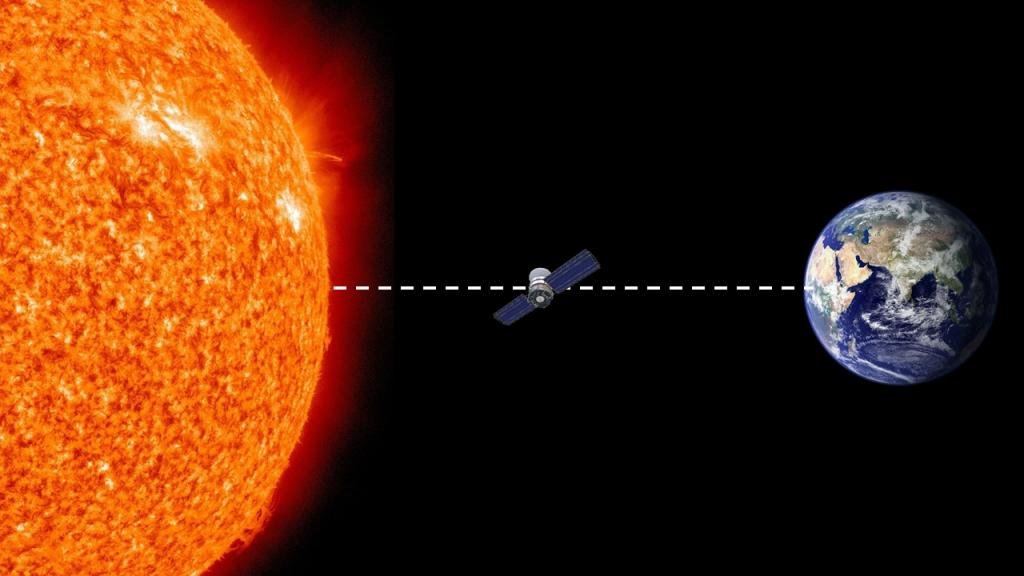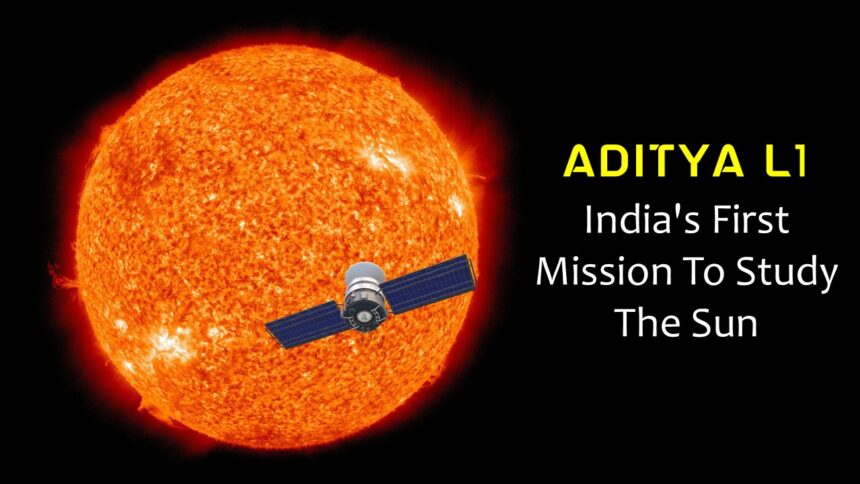The constant development that had been the notion since the onset of globalization had led to the establishment of a gradual change in the working procedures related to the sections related to spacecraft in general. The Indian government had been planning to establish its status by doing clear work related to the research on India’s first solar mission, the Aditya—L 1 Mission.
After several alterations, the government finally sent representatives to establish a clear understanding of the working system adopted by the sun in general. The present case would lead you to explore the various areas related to the Sun Mission of ISRO through direct space travel. So therefore, the time has come to begin our journey…
Who is ISRO?
The Indian government had, from its inception, shown great regard towards the development of the missions related to astronomy in general. To establish their concerns and bring significant transformations in the entire aspect, the government had led to the emergence of an organization titled The Indian Space Research Organization, the national space agency of India, which mainly is controlled by the Prime Minister and appears to solve the issues and the researches related to the space in the case.
Before the development of such an organization, the initial workings related to space were mainly felt during the 1920s when scientists like S. K. Raman, C. V. Mitra, and Meghnad Saha had greatly contributed to the entire aspect.
After developing several researchers related to the spacecraft, government officials developed a separate concern that would enable them to function and maintain proper control over the entire system. Thus, “The Indian Space Research Organization”(ISRO) emerged.
The first solar mission performed by the Indian government, the Aditya—L 1 Mission, was conducted by the organization and led to the establishment of several aspects in the development of the entire notion.
What is the Aditya-L1 mission of ISRO?
For a long time, the Indian government had been planning to execute and launch a mission that would enable them to gain a clear insight into the various available variants and take them into consideration through the influence of India’s first Solar Mission. The Aditya- L 1 Mission has been one of the most significant missions led by the ISRO to understand the working culture of the magnetic fields associated with the system and the solar winds and flares associated with it.

The Sun Mission of ISRO, besides mentioning the reason and the importance in this regard, has also mentioned the importance of the 6 payloads that have been significant for the proper functioning of the entire aspect. The 6 payloads are those of the
- Visible Emission Line Coronagraph (VELC),
- Solar Ultraviolet Imaging Telescope (SUIT),
- Aditya Solar Wind Particle Experiment (ASPEX),
- Plasma Analyser Package for Aditya (PAPA),
- Solar Low Energy X-ray Spectrometer (SoLEXS),
- High Energy L1 Orbiting X-ray Spectrometer (HEL1OS), and
- Magnetometer
The first one would enable the astronauts to gain a clear understanding and information on the “solar corona and dynamics and origin of Coronal Mass Ejections (3 visible and 1 Infra-Red channel); magnetic field measurement of solar corona down to tens of Gauss – Indian Institute of Astrophysics (IIA)”. Like the first one, the other five payloads will also provide several benefits in the case, leading the researchers to gain more benefits through the entire system. This would enable the Sun Mission of ISRO to attain considerable success.
What is the Aditya-L1 launch date?
The Aditya—L 1 Mission was denoted as the first breakthrough of the Indian government in establishing India’s first solar mission. The entire aspect was planned to be launched in the third quarter of 2022.
Objective of Aditya-L1 mission-
The Aditya-L1 mission was established as the first step of India’s first solar mission, which ISRO would conduct. The organization’s ulterior motive was to conduct research that would enable it to observe the Sun’s different procedures clearly.
To continue with this thing, the Sun Mission of ISRO had been observed, which maintains several objectives that are the following:
- This research would improve our understanding of the Sun’s corona (visible and near-infrared rays), chromosphere (ultraviolet), photosphere (soft and hard X-rays), solar winds, and flares.
- The other areas that would be focused on are solar emissions and Coronal Mass Ejections (CMEs).
- The round-the-clock sun imaging would also be carried out throughout the entire process to a great extent.
These are the major motives behind executing the plan that the organization has derived. It had been a long time since the entire plan had been conducted, which could be dated back to 2007 when the researchers felt it important to maintain a study of India’s first solar mission, which would enable them to maintain a coronagraphy spacecraft to study the solar atmosphere.
The entire research would be conducted in a manner that would lead India’s first solar mission to insert their system into a halo orbit surrounding the L 1 point between the Earth and the Sun, which would further necessitate the study of the solar atmosphere, magnetic storms, and their impact on the Earth. Thus, by analyzing the major areas of concern, we have decided on the importance of the Sun Mission of ISRO and the specific areas of concern that would be analyzed.
Background of India’s first solar mission – the Aditya L 1 Mission
The concept of India’s first solar mission has been conceived as one of the most vital moves adopted by the government to conduct the Sun Mission of ISRO. The plan had been conceived to retain better information and research related to solar emissions and Coronal Mass Ejections (CMEs).
These would enable the researchers to provide further development in the various aspects connected with the ISRO Sun Mission. The mission plans to launch a satellite by placing it in the halo around Lagrangian point 1 (L1), enabling them to get a clear view of the Sun without any disturbance caused by the eclipses.
This has led the mission to change its title from Aditya- 1 mission to Aditya- L 1 Mission, enabling the system to be inserted in the halo orbit about 1.5 million km from the Earth. Other than this the satellite would also include 6 payloads that would enable them to maintain its objectives.
Importance of India’s First Solar Mission –
India’s first solar mission has been widely denoted as the most significant move undertaken by the ISRO to maintain a clear development of the entire aspect. The ISRO Sun Mission was planned to bring significant development and to understand the sun’s corona, chromosphere, photosphere, and magnetic storms associated with the entire system.
The Aditya- L 1 Mission had been planned to develop the above-mentioned notions, enabling them to lead better communication regarding the entire aspect. The major significance that might be derived from the Sun Mission of ISRO after its execution are the following:
- The Sun is the most significant planet in the solar system as it shows certain variations in its radiation due to several related activities.
- These variations would then lead the researchers to gain a clear understanding of the origin of life, the atmosphere related to the exoplanets, and the plasma associated with it.
- This process would mainly be denoted as the working of a comprehensible understanding of the dynamic processes related to the sun, which, of course, would lead them to make a comprehensive understanding of the problems related to the solar system in this case.
- The magnetic field existing in the Sun could not be analyzed in the past years due to the lack of proper machines, but the Aditya L 1 Mission would enable them to gain clear insight.
Conclusion –
Now, the time has come to return from our space mission and bring significant areas of concern. The entire analysis has enabled us to understand the importance and the excitement behind the conception of the Aditya L 1 Mission and its objectives quite thoroughly. The major reasons behind the execution of the Sun Mission of ISRO have been discussed, which might be taken into consideration.
Therefore, this allows us to understand the estimation and excitement that developed during the entire system’s creation, which led to the development of the concept of India’s first solar mission.
FAQs on India’s first solar mission – Aditya L1
1. Who is ISRO?
The Indian Space Research Organisation (ISRO) is the agency responsible for India’s first solar mission. It is India’s equivalent of NASA.
2. What is India’s first solar mission?
India’s first solar mission is called Aditya-L1. It is a probe that will orbit the sun and study its surface and atmosphere.
3. When is India’s first solar mission scheduled to launch?
India’s first solar mission is scheduled to launch in 2020.
4. Why is India’s first solar mission important?
India’s first solar mission is important because it will help us learn more about our sun and its effects on Earth. It will also help us develop new technologies for future missions to the sun.
5. What are some of India’s other space missions?
India has launched several other space missions, including the Chandrayaan-1 lunar probe and the Mangalyaan Mars probe.
6. Where will India’s first solar mission be launched from?
India’s first solar mission will be launched from the Satish Dhawan Space Centre in Sriharikota, India.
What are the objectives of India’s first solar mission?
The objectives of India’s first solar mission are to:
● Study the sun’s surface and atmosphere
● Understand the dynamics of the sun’s magnetic field
● Learn more about the origin and evolution of the sun
What is the meaning of L in the Aditya-L1 mission?
The ‘L’ in Aditya-L1 stands for “lunar”. The Aditya-L1 mission is India’s first mission to study the Sun from proximity, and it will be launched onboard India’s maiden moon mission – Chandrayaan-2.
Q. What is the meaning of L in the Aditya-L1 mission?
A. The ‘L’ in Aditya-L1 stands for “lunar”. The Aditya-L1 mission is India’s first mission to study the Sun from proximity, and it will be launched onboard India’s maiden moon mission – Chandrayaan-2.





